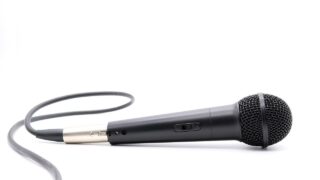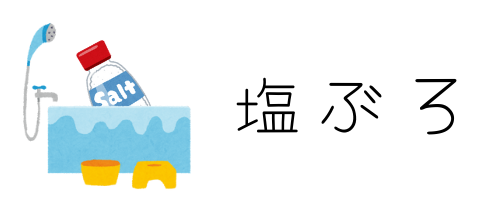ライフハックとしてではなく、英語学習にも極めて有用なのが、著名人が10分程度のプレゼンを行うTEDです。
TED Talksとは、あらゆる分野のエキスパートたちによるプレゼンテーションを無料で視聴できる動画配信サービスのことです。10年ほど前にサービスが開始されてから、政治、心理学、経済、日常生活などの幅広いコンテンツが視聴できることから人気を集めています。
RareJob English Lab
TEDは4000を超える膨大な数の動画があります。しかし慣れないうちは、動画の探し方や視聴のコツが分かりませんよね。この記事では、数多くのTEDを見てきた管理人(塩@saltandshio)が、心を揺さぶられたトークをあらすじと一緒にご紹介します。
ビジネス英会話を効率よく身につけたい方におすすめスクール
シェーン英会話
シェーンは1977年の創業以来、ネイティブ講師が英語を英語で教える「直接教授法」を採用しています。首都圏におけるスクール拠点数は、ネイティブ講師の英会話スクールでNo.1。駅から近いスクールが多いので通いやすく時間を有効に使えます。
スピークバディ パーソナルコーチング
1日1時間の短期集中トレーニングで、あなたの英語力向上をコーチが全力でサポートします。あなたの英語の世界が、劇的に変わります。
エレ・ヨエリ: 良い行いをするように人びとを動機づける方法
人びとに良い行いをさせるためにはどうしたら良いのでしょう?MITの研究者であるエレ・ヨエリが、人びとに良い行いをさせようとする働きかけがどのような成果をもたらすか紹介します(約12分半)。
[PR]無料体験レッスン実施中!全国208校、創業40年の老舗英会話スクール【シェーン英会話】利用するのは「評判の力」
見も知らない他人に、どうやったら良い行いを促すことが出来るでしょうか。エレ・ヨエリは、大規模停電を回避するプロジェクトチームに携わった経験から、どのような方法が効果的だったかを紹介します。この大規模停電を回避するプログラムは、電力需要の最盛期に使用量を削減し、大規模停電を回避させようというものです。
私たちも多くの電力を使用しています。夏や冬になると、テレビのCMや新聞で「節電しよう」という文字を多く目にしますが、思ったほど効果は出ていません。それはなぜでしょうか。
ですが、多くの崇高な技術的解決策がそうであるように、弱点があるのです。 それは「人」です。「人」の参加が必要です。
But, like so many great technological solutions, it has a key weakness: people. People need to sign up.
どれほど丁寧な手紙を送っても、実際に行動に移す人はほとんどいません。エレ・ヨエリの参加したプロジェクトもそうでした。なんとかこの状況から抜け出すために、エレ・ヨエリはビルの郵便受けの近くに記名簿を貼ることを勧めました。すると、なんと参加者が3倍になったのです。
[PR]まずは無料カウンセリング”続けるため”の オンライン英語コーチ「スピークバディ パーソナルコーチング」他人の目も効果的な方法
手紙を送っただけではほとんど効果がなかったのに、郵便受けの近くに記名簿を貼ったら参加者が3倍が膨れ上がりました。これは、他人から自分をどう見られたいかという心理を利用したテクニックといえます。
意識しているかどうかは別にしても、人が良い行いをする大きな理由のひとつです。だから、良い行いを手柄にしやすくなる小さな変化が、とても大きな違いを生み出せるのです。
Whether we are aware of it or not, this is a big part of why people do good, and so small changes that give people more credit for doing good, those changes can make a really big difference.
実際、エレ・ヨエリは節電プロジェクトだけではなく、政府、NPO、企業との仕事をする際には、この「評判の力」を利用しています。「評判の力」を使うことによって、人びとにより良い行いを促すことが出来るからです。
[PR]しちだの魔法ペンなら35日でバイリンガルに!楽天4部門1位の英会話!<七田式>ポイントは逃げ道を徹底的になくすこと
なぜ、私たちは「こうしたほうが良い」というのがわかっているのに、それを行動に移せないのでしょうか。それは、私たちはいつも自分の心配事しか考えていないからです。しかし、この「他人の目」を利用することによって、自分の事だけではなく他人のために良い行いをする機会に注意を向けることが出来るようになります。
それでも、良い行いに対して私たちは逃げ道を作ります。わかりやすい例で言うと、街頭でボランティアが寄付を募っていても見ないふりをする、などです。では、そういう人たちに寄付してもらうにはどうすれば良いのでしょうか。
エレ・ヨエリは、あるスーパーの出口に寄付金を募集するボランティアを立たせました。しかし、このスーパーの出口は2つあり、多くの人がボランティアが立っていない出口を利用して寄付を避けました。なぜでしょうか。この人たちは、自分に「ボランティアなんて居なかった」、「買いたいものに近かったから」、「車に近いから」という言い訳を自分に言うことによって、良心が痛むことから逃げたのです。
エレ・ヨエリは、このような言い訳をさせないために、両方の出入口にボランティアを立たせます。すると、とたんに寄付が増加しました。しかし、しばらくするとこの2つの出入口から人がまったく出入りしなくなりました。不思議に思って調べてみると、なんと来店客はこのスーパーにあった業務用の小さな出入口を利用して、ボランティアを避けていたのです。
これは非常に重要な教訓です。
言い訳を無くそうとするときは、徹底して行うべきであるということです。人びとは言い訳作りの創造性にとても富んでいるからです。
This teaches us an important lesson though.
When we’re trying to eliminate excuses, we need to be very thorough, because people are really creative in making them.
私たちは、自分の損失を避けようとしたとき、実に想像力が豊かになります。それは、自分の事が可愛いからです。ですので、他人のための行動を促す際には、徹底的に逃げ道を排除する必要があるのです。
[PR]知って得する、知らないと損をする!すぐに役立つ相手に合った「伝え方」のコツ!人に良い行いをさせる3つのチェックリスト
ワシントンDCや、日本、そしてロンドンでは、地下鉄の乗客がエスカレータの右側に立つことを心がけています。これは、ほかの人が左側を歩けるようにするためですが、残念なことに万国共通ではありません。なんと世界には、両側に立ってエスカレータを詰まらせる地域が多くあるのです。
右側に立って先に行かせてあげた方が良いのは明らかなのですが、このような気遣いが出来る地域はじつは限定されているのです。このように、良い行いを期待されることもあれば、期待されない場合もあります。しかし、人は良い行いを期待されているという合図にとても敏感です。助けてほしかったら、あれこれ考えずに素直に言った方が人は聞いてくれます。
さきほどのエレベーターの話で言うと、他人が右側に寄るのを待つのではなく、「早く行きたいので右側に寄ってください」と言えば、効果が見込めるということです。
要は、様々な異なる方法を使って期待を伝えることができるということです。実践を忘れないでください。
The bottom line is, lots of different ways to do this, lots of ways to communicate expectations. Just don’t forget to do it.
これらのことから、人に良い行いをさせるには
- 観測されやすさを上げる
- 言い訳を排除する
- 期待を伝える
という手法がとても効果的です。この3つがエレ・ヨエリが見つけた、良い行いをするように人びとを動機づける方法です。
[PR]検定試験合格者累計140万人!スマホ対応☆国家資格ほか資格取得ならSMART合格対策講座まとめ:お金を使わずに人は動かせる!
あなたがなんらかのコミュニティに関わっていれば、人が良い行いをもっとするために動機付けを必要とする機会がおとずれるかもしれません。地域のごみ拾いや、なにかのお手伝いをお願いするという小さなこともあるでしょう。
そんなときに、これらの手法はとても有効的であるといえます。
いずれの手法も追加資金を必要とせず、高等な技術を新たに開発する必要もありません。
And these tools, they don’t require that you raise additional funds or that you develop any more fancy technologies.
利用するのは「評判の力」だけです。観測されやすさを上げて、言い訳を排除し、期待を伝えれば、きっとこれまで動かなかった人もきっと動かせるようになるでしょう。
英語全文
How can we get people to do more good, to go to the polls, give to charity, conserve resources, or even to do something as simple as washing their mugs at work so that the sink isn’t always full of dirty dishes?
<全文を読む>▼クリック▼
Why? Well, we all know people care deeply about what others think of them, that we try to be seen as generous and kind, and we try to avoid being seen as selfish or a mooch. Whether we are aware of it or not, this is a big part of why people do good, and so small changes that give people more credit for doing good, those changes can make a really big difference. Small changes like switching from a hotline, where nobody will ever find out about your good deed, to a sign-up sheet where anyone who walks by can see your name.
In our collaborations with governments, nonprofits, companies, when we’re trying to get people to do more good, we harness the power of reputations. And we have a simple checklist for this. And in fact, you already know the first item on that checklist. It’s to increase observability, to make sure people find out about good deeds.
Now, wait a minute, I know some of you are probably thinking, there’s no way people here thought, “Oh, well, now that I’m getting credit for my good deed, now it’s totally worth it.” And you’re right. Usually, people don’t. Rather, when they’re making decisions in private, they worry about their own problems, about what to put on the table for dinner or how to pay their bills on time. But, when we make their decision more observable, they start to attend more to the opportunity to do good. In other words, what’s so powerful about our approach is that it could turn on people’s existing desire to do good, in this case, to help to prevent a blackout.
Back to observability. I want to give you another example. This one is from a collaboration with a nonprofit that gets out the vote, and it does this by sending hundreds of thousands of letters every election in order to remind people and try to motivate them to go to the polls. We suggested adding the following sentence: “Someone may call you to find out about your experience at the polls.” This sentence makes it feel more observable when you go to the polls, and it increased the effect of the letter by 50 percent. Making the letter more effective reduced the cost of getting an additional vote from 70 dollars down to about 40 dollars. Observability has been used to do things like get people to donate blood more frequently by listing the names of donors on local newsletters, or to pay their taxes on time by listing the names of delinquents on a public website.
What about this example? Toyota got hundreds of thousands of people to buy a more fuel-efficient car by making the Prius so unique … that their good deed was observable from a mile away.
Alright, so observability is great, but we all know, we’ve all seen people walk by an opportunity to do good. They’ll see somebody asking for money on the sidewalk and they’ll pull out their phones and look really busy, or they’ll go to the museum and they’ll waltz right on by the donation box. Imagine it’s the holiday season and you’re going to the supermarket, and there’s a Salvation Army volunteer, and he’s ringing his bell. A few years ago, researchers in San Diego teamed up with a local chapter from the Salvation Army to try to find ways to increase donations. What they found was kind of funny. When the volunteer stood in front of just one door, people would avoid giving by going out the other door. Why? Well, because they can always claim, “Oh, I didn’t see the volunteer,” or, “I wanted to get something from over there,” or, “That’s where my car is.” In other words, there’s lots of excuses. And that brings us to the second item on our checklist: to eliminate excuses. In the case of the Salvation Army, eliminating excuses just means standing in front of both doors, and sure enough, when they did this, donations rose. But that’s when things got kind of funny, even funnier. The researchers were out in the parking lot, and they were counting people as they came in and out of the store, and they noticed that when the volunteers stood in front of both doors, people stopped coming out of the store at all.
Obviously, they were surprised by this, so they decided to look into it further, and that’s when they found that there was actually a third, smaller utility door usually used to take out the recycling — and now people were going out that door in order to avoid the volunteers.
This teaches us an important lesson though. When we’re trying to eliminate excuses, we need to be very thorough, because people are really creative in making them.
Alright, I want to switch to a setting where excuses can have deadly consequences. What if I told you that the world’s deadliest infectious disease has a cure, in fact, that it’s had one for 70 years, a good one,one that works almost every time? It’s incredible, but it’s true. The disease is tuberculosis. It infects some 10 million people a year, and it kills almost two million of them. Like the blackout prevention program, we’ve got the solution. The problem is people. People need to take their medication so that they’re cured, and so that they don’t get other people sick. For a few years now, we’ve been collaborating with a mobile health startup called Keheala to support TB patients as they undergo treatment.
Now, you have to understand, TB treatment, it’s really tough. We’re talking about taking a really strong antibiotic every single day for six months or more. That antibiotic is so strong that it will make you feel sick. It will make you feel nauseous and dizzy. It will make your pee turn funny colors. It’s also a problem because you have to go back to the clinic about every week in order to get more pills, and in sub-Saharan Africa or other places where TB is common, now you’re talking about going someplace pretty far, taking tough and slow public transport, maybe the clinic is inefficient. So now you’re talking about taking a half day off of work every week from a job you desperately can’t afford to lose. It’s even worse when you consider the fact that there’s a terrible stigma, and you desperately don’t want people to find that you have the disease. Some of the toughest stories we hear are actually from women who, in these places where domestic violence can be kind of common, they tell us that they have to hide it from their husbands that they’re coming to the clinic.
So it’s no surprise that people don’t complete treatment. Can our approach really help them? Can we really get them to stick it out? Yeah. Every day, we text patients to remind them to take their medication, but if we stopped there, there’d be lots of excuses. “Well, I didn’t see the text.” Or, “You know, I saw the text, but then I totally forgot, put the phone down and I just forgot about it.” Or, “I lent the phone out to my mom.” We have to eliminate these excuses and we do that by asking patients to log in and verify that they’ve taken their medication. If they don’t log in, we text them again. If they don’t log in, we text them yet again. If, after three times, they still haven’t verified, we notify a team of supporters and that team will call and text them to try to get them back on the wagon. No excuses.
Our approach, which, admittedly, uses all sorts of behavioral techniques, including, as you’ve probably noticed, observability, it was very effective. Patients without access to our platform were three times more likely not to complete treatment.
Alright, you’ve increased observability, you’ve eliminated excuses, but there’s still a third thing you need to be aware of. If you’ve been to Washington, DC or Japan or London, you know that metro riders there will be very careful to stand on the right-hand side of the escalator so that people can go by on the left. But unfortunately, not everywhere is that the norm, and there’s plenty of places where you can just stand on both sides and block the escalator. Obviously, it’s better for others when we stand on the right and let them go by, but we’re only expected to do that some places.
This is a general phenomenon. Sometimes we’re expected to do good and sometimes not, and it means that people are really sensitive to cues that they’re expected to do good in a particular situation, which brings us to the third and final item on our checklist: to communicate expectations, to tell people, “Do the good deed right now.” Here’s a simple way to communicate expectations; simply tell them, “Hey, everybody else is doing the good deed.” The company Opower sends people in their electricity bill a small insert that compares their energy consumption with that of people with similarly sized homes. And when people find out that their neighbors are using less electricity, they start to consume less. That same approach, it’s been used to get people to vote or give to charity or even reuse their towels in hotels.
What about this one? Here’s another way to communicate expectations; simply do it by saying, “Do the good deed” just at the right time. What about this one? This ticker reframes the kind of mundane task of turning off the lights and turns it instead into an environmental contribution.
The bottom line is, lots of different ways to do this, lots of ways to communicate expectations. Just don’t forget to do it. And that’s it. That’s our checklist.
Many of you are working on problems with important social consequences, and sometimes you might need to motivate people to do more good. The tools you learned today can help you with this. And these tools, they don’t require that you raise additional funds or that you develop any more fancy technologies. They just require harnessing reputations by increasing observability, eliminating excuses and communicating expectations.
Thank you.
<閉じる>
\ ほかにも気になるトークが満載! /








